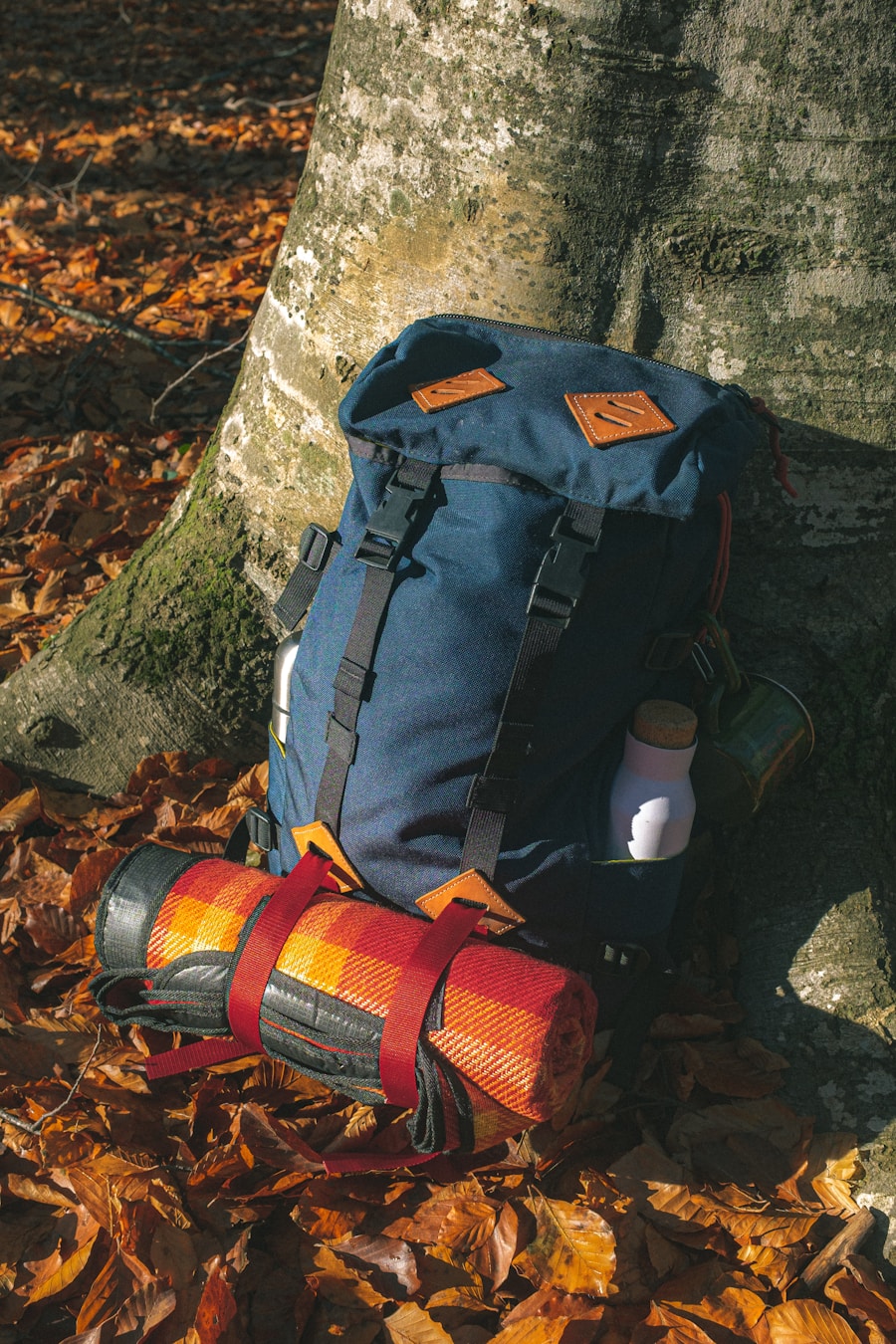A hiking backpack is more than just a vessel for carrying gear; it is an essential companion that endures the rigors of the great outdoors. Over time, dirt, sweat, and various environmental elements accumulate on the fabric, zippers, and straps, which can lead to unpleasant odors and even mold growth if left unaddressed. Regularly washing your hiking backpack not only enhances its appearance but also prolongs its lifespan.
A clean backpack is less likely to harbor bacteria and fungi, which can pose health risks during your outdoor adventures. Moreover, a well-maintained backpack ensures that your gear remains protected from the elements, as dirt and grime can compromise the integrity of waterproof coatings. Additionally, a clean backpack can significantly improve your overall hiking experience.
When you’re out on the trail, the last thing you want is to be distracted by unpleasant smells or the discomfort of a dirty pack rubbing against your back. A fresh and clean backpack can boost your morale and make your hiking experience more enjoyable. Furthermore, maintaining cleanliness can help you identify any wear and tear that may need attention, such as frayed straps or damaged seams, allowing you to address these issues before they become significant problems on the trail.
Key Takeaways
- Regularly washing your hiking backpack is important to maintain its durability and functionality
- Before washing, remove all items from your backpack and check for any damages or repairs needed
- Choose cleaning products specifically designed for outdoor gear to ensure the best results and to protect the fabric
- Hand washing is recommended for delicate backpacks, while machine washing can be used for more durable materials
- After washing, air dry your backpack in a well-ventilated area, avoiding direct sunlight to prevent damage to the fabric
Preparing Your Backpack for Washing
Before diving into the washing process, it is crucial to prepare your backpack properly. Start by emptying all compartments and pockets, ensuring that no items are left behind. This includes checking hidden pockets where small items might be stashed away.
Once emptied, inspect the backpack for any damage or areas that may require special attention during cleaning. For instance, if you notice any loose threads or broken buckles, it’s wise to repair these before washing to prevent further damage. Next, shake out the backpack vigorously to dislodge any dirt or debris that may have settled in the crevices.
This step is particularly important for backpacks that have been used in rugged terrains where dirt and sand can accumulate. After shaking it out, use a soft brush or cloth to remove any stubborn dirt particles stuck to the fabric. Pay special attention to areas like the bottom of the pack and around zippers, as these spots often collect grime.
If your backpack has removable components, such as a hip belt or an internal frame, detach them as well; this will allow for a more thorough cleaning and ensure that every part of your backpack receives proper care.
Choosing the Right Cleaning Products

Selecting appropriate cleaning products is vital for maintaining the integrity of your hiking backpack.
Many backpacks are made from specialized materials designed to withstand harsh conditions, and using harsh chemicals can damage these fabrics. It is advisable to opt for mild detergents that are free from bleach and fabric softeners.Look for products specifically formulated for outdoor gear or technical fabrics, as these are designed to clean effectively without compromising water repellency or breathability. In addition to detergent, consider using a specialized cleaner for waterproof materials if your backpack has a waterproof coating. These cleaners help maintain the effectiveness of the waterproof layer while removing dirt and grime.
For those who prefer eco-friendly options, there are biodegradable detergents available that are gentle on both fabrics and the environment. Always read labels carefully to ensure that the product is suitable for your specific backpack material, as some fabrics may require unique care.
When it comes to washing your hiking backpack, you have two primary options: hand washing or machine washing. Each method has its advantages and disadvantages, and the choice often depends on the specific materials of your backpack and personal preference. Hand washing is generally considered the gentler option and allows for more control over the cleaning process.
It is particularly recommended for delicate fabrics or backpacks with intricate designs that could be damaged in a washing machine. To hand wash your backpack, fill a bathtub or large basin with lukewarm water and add a small amount of mild detergent. Submerge the backpack and use a soft sponge or cloth to gently scrub all surfaces, paying special attention to stained areas and seams.
Rinse thoroughly with clean water to remove all soap residue, as leftover detergent can attract dirt over time. On the other hand, machine washing can be more convenient for heavily soiled backpacks but requires caution. If you choose this method, place your backpack in a mesh laundry bag to protect it from snagging on other items in the wash.
Use a gentle cycle with cold water and a mild detergent to minimize wear.
Drying Your Hiking Backpack
| Methods | Effectiveness | Time Required |
|---|---|---|
| Hanging to air dry | Effective for light moisture | 4-6 hours |
| Using a fan | Effective for moderate moisture | 2-3 hours |
| Using a dehumidifier | Effective for heavy moisture | 1-2 hours |
Proper drying is crucial after washing your hiking backpack, as improper drying techniques can lead to mold growth or damage to the fabric. After washing, gently shake out excess water without wringing or twisting the fabric, as this can distort its shape and structure. The best practice is to air dry your backpack in a well-ventilated area away from direct sunlight.
Direct sunlight can degrade certain materials over time, leading to fading and weakening of the fabric. To facilitate drying, consider hanging your backpack upside down on a clothesline or using a drying rack. This position allows water to drain out effectively while preventing moisture from accumulating in pockets or compartments.
If you’re in a hurry, you can also use a fan to increase airflow around the backpack, speeding up the drying process without exposing it to heat sources like radiators or hair dryers, which can cause damage.
Removing Stubborn Stains and Odors
Despite regular cleaning efforts, some stains and odors may persist in your hiking backpack due to exposure to sweat, food spills, or environmental factors. To tackle stubborn stains, it’s essential to act quickly before they set in. For organic stains like food or mud, create a paste using baking soda and water; apply it directly to the stain and let it sit for about 30 minutes before scrubbing gently with a soft brush.
For odors that linger even after washing, consider using white vinegar as a natural deodorizer. Mix equal parts of water and white vinegar in a spray bottle and lightly mist the interior of your backpack. Allow it to air out completely before using it again; this method not only neutralizes odors but also helps eliminate bacteria that may be causing them.
In cases where odors persist despite these efforts, specialized odor-eliminating sprays designed for outdoor gear can be effective alternatives.
Maintaining Your Backpack’s Water Resistance

Many hiking backpacks come with water-resistant coatings that help keep your gear dry during unexpected rain showers. However, these coatings can wear off over time due to regular use and washing. To maintain your backpack’s water resistance, consider reapplying a durable water repellent (DWR) treatment after washing it.
DWR treatments are available in spray or wash-in forms and are designed specifically for outdoor fabrics. Before applying DWR treatment, ensure that your backpack is clean and completely dry. Follow the manufacturer’s instructions carefully when applying the treatment; typically, this involves spraying an even coat over the exterior of the dry backpack and allowing it to cure according to specified times.
Regularly checking for signs of water resistance—such as water beading on the surface—can help you determine when it’s time for reapplication.
Storing Your Clean Backpack
Once your hiking backpack is clean and dry, proper storage is essential for maintaining its condition until your next adventure. Avoid storing your backpack in damp or humid areas, as this can lead to mold growth and unpleasant odors. Instead, choose a cool, dry place with good airflow; a closet or storage room works well for this purpose.
When storing your backpack, consider keeping it loosely packed with some crumpled paper or a packing cube inside to help maintain its shape. This prevents creases from forming in the fabric while also allowing air circulation within compartments. Additionally, avoid placing heavy items on top of your backpack during storage; this can cause deformation over time.
By following these storage tips, you ensure that your hiking backpack remains in excellent condition and ready for your next outdoor excursion.
If you’re planning a hiking trip and need to clean your backpack before hitting the trails, you may want to check out this article on how to start a career as a travel advisor with no experience needed. Just like learning the ropes in a new career, properly cleaning and maintaining your hiking gear is essential for a successful adventure. This article provides helpful tips and tricks for beginners looking to break into the travel industry, just as you may be looking to break into the world of hiking.
FAQs
What is the best way to wash a hiking backpack?
The best way to wash a hiking backpack is by hand using a mild detergent and warm water. Avoid using a washing machine as it can damage the backpack’s materials and components.
How often should I wash my hiking backpack?
It is recommended to wash your hiking backpack after every few uses, especially if it has been exposed to dirt, sweat, or other outdoor elements. Regular cleaning helps maintain the backpack’s durability and performance.
Can I use a washing machine to clean my hiking backpack?
It is not recommended to use a washing machine to clean a hiking backpack, as the agitation and spinning can damage the backpack’s fabric, zippers, and straps. Hand washing is the preferred method for cleaning a hiking backpack.
How do I dry my hiking backpack after washing it?
After washing, hang your hiking backpack in a well-ventilated area to air dry. Avoid direct sunlight and high heat, as these can cause the materials to deteriorate. Make sure the backpack is completely dry before storing it.
Can I use bleach or harsh chemicals to clean my hiking backpack?
It is not recommended to use bleach or harsh chemicals to clean a hiking backpack, as these can damage the fabric and compromise the backpack’s integrity. Stick to mild detergent and warm water for cleaning.
